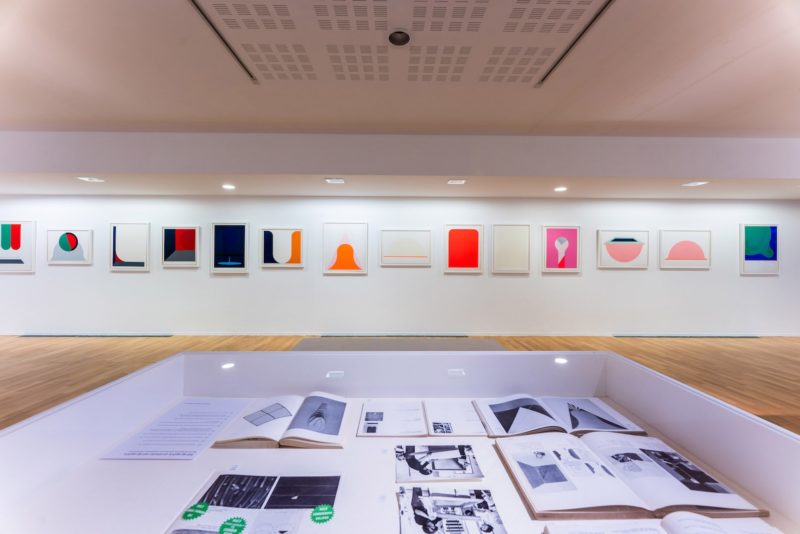
Takesada Matsutani : Prints, 1967-1977
Collections of the National Institute of Art History (INHA)
Following the artist's exceptional donation to the National Institute of Art History this year, the Abattoirs, Musée - Frac Occitanie Toulouse and the INHA Paris present, for the first time to the public, a selection of Takesada Matsutani's prints made between 1967 and 1977, during his first years in Paris.
After the exhibition Sismographie des luttes. Non-European Journals from the 18th to the 20th Century, Towards a Global History (from 24.01. to 24.02. 2019), the Abattoirs continue their collaboration with the INHA to present four ensembles testifying to the richness and diversity explored by the Gutai artist between 1967 and 1977: early works within Atelier 17 (1967), reflection around the representation of space in the two dimensions of the print (1968-1969), the exploration of silkscreening and solid colors comparable to Hard Edge (1969-1971), and finally the reinterpretation through photoserigraphy of earlier three-dimensional works made with vinyl glue (1973-1977). The prints are accompanied by items loaned by the artist: two engraved plates corresponding to two of the prints exhibited, engraver's tools, photographs of the artist at work, and catalogs of international and biennial exhibitions in which his works have been exhibited and awarded prizes.
Born in 1937 in Osaka, Takesada Matsutani has been living and working in Paris since 1966, after winning the Tokyo Franco-Japanese Institute's prize - a six-month scholarship to study in France, awarded by the French government. Earlier, in 1959, at the drawing workshop of the Nishinomiya Citizens' Art School, he met Sadamasa Motonaga, one of the members of the Gutai Group, founded by Jiro Yoshihara in 1954. He exhibited with this group from 1963 until its dissolution in 1972. In 1967, he joined the Atelier 17 in Paris, an engraving workshop directed by Stanley William Hayter, where he became his assistant. There he learned the techniques of burin, etching and aquatint. He then joined the silkscreen workshop created by Kate Van Houten, his wife, and Lorna Taylor.
Takesada Matsutani has thus enriched the collections of the library of the National Institute of Art History. The exceptional donation of 88 prints, a portfolio and 3 artists' books covers a large part of the engraved work, from the first prints made in 1967 to the etchings created in 2016. It joins a collection begun in the early 20th century by the great couturier and patron Jacques Doucet, who sought to gather prints by the most important artists from the 1780s to the 1910s.
The Abattoirs collection holds one of the most important Gutai collections in France, including four works by Takesada Matsutani.
This exhibition makes it possible to rediscover in France a part of Takesada Matsutani's work and to underline the privileged relationship that the artist maintained during a decade with the various modes of expression allowed by the variety of print techniques. They also give a broader view of the role of printmaking in the international artistic output of the 1960s and 1970s.
In partnership with the National Institute of Art History (INHA)
![]()
